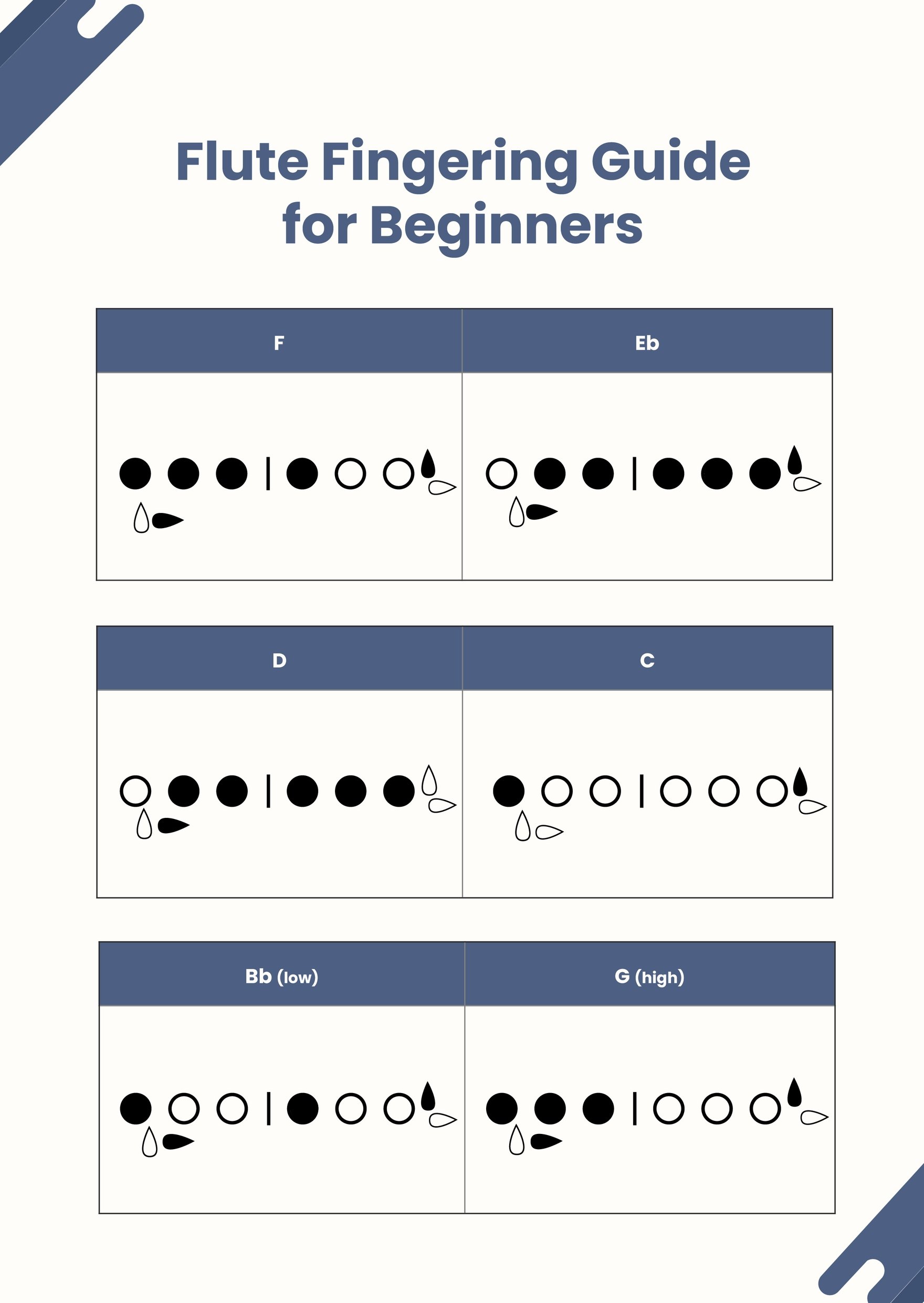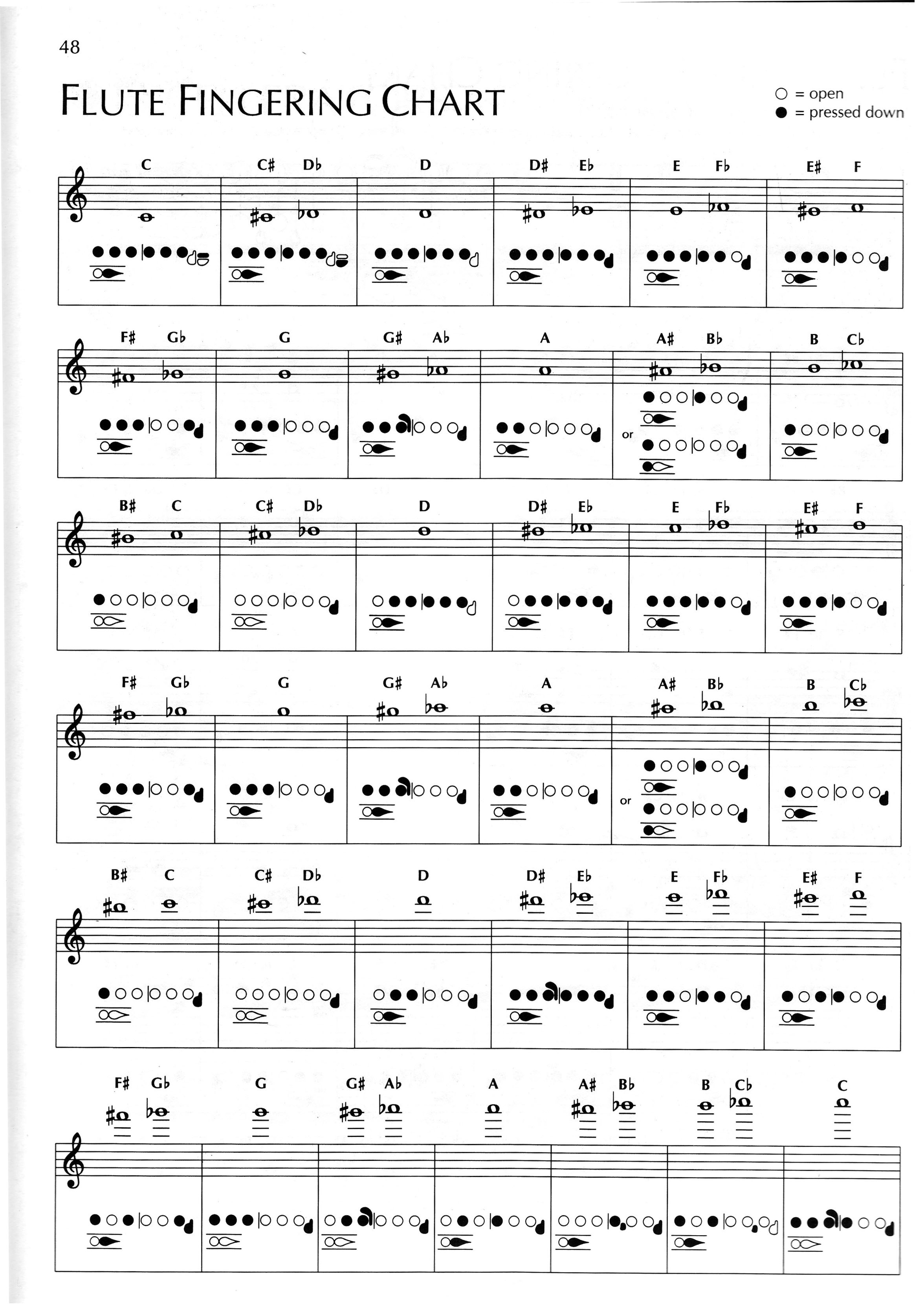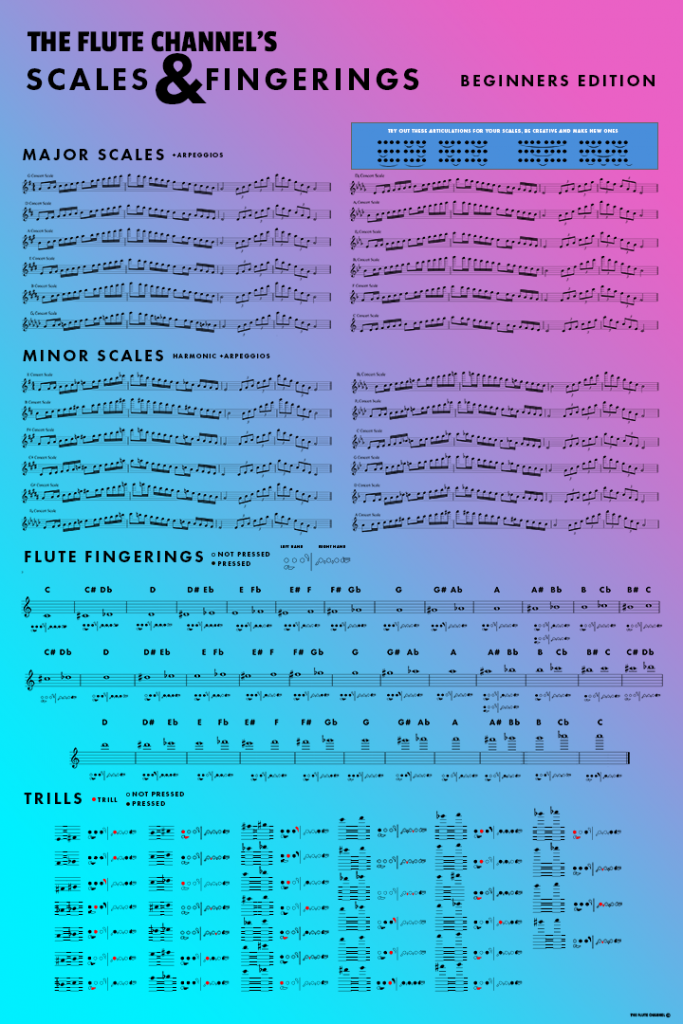The most reliable reference for flute fingerings is probably a modern guide to fingerings for the flute by james pellerite. Your middle finger should also skip a key. Each chart displays holes on the flute and the keys you should press or leave open to produce a specific note. Ensure that you have a flute fingering chart specifically designed for the type of flute you’re playing. There is an alternate fingering for a#/bb that has been included too.
Locate the note you wish to play on the chart. When reading this flute fingerings chart, you'll notice the holes are empty or filled in. The figure also tells you your fingers’ home positions on the flute. * the actual pitch of a piccolo is eight tones (one octave) up from the written score. In this fingering chart we have listed both, since they are of equal importance.
Web master flute finger placement. The fingering which makes use of the bb thumb. Flute fingering charts can be a great way to have all the fingerings in one place! The most reliable reference for flute fingerings is probably a modern guide to fingerings for the flute by james pellerite. This figure tells you the standard code used in most flute fingering charts and diagrams for the fingers of your right and left hands — those that depress the flute’s keys.
The fingering which makes use of the bb thumb. I'm jane cavanagh and i've been teaching the flute for over 20 years. When reading this flute fingerings chart, you'll notice the holes are empty or filled in. Your ring finger should sit on the key directly beside your middle finger (see image 1). Flute fingering charts can be a great way to have all the fingerings in one place! In the first and second register, there are actually two basic fingerings commonly used to produce these notes. This figure tells you the standard code used in most flute fingering charts and diagrams for the fingers of your right and left hands — those that depress the flute’s keys. My top 3 tips for practicing high notes: High notes on the flute require a strong, focused airstream. Your middle finger should also skip a key. Form mouth and blow with proper embouchure. 00000 oa • 00000' 0000.o.ooa. Each fingering chart is split up by acoustic octaves, whose ranges are notated and clickable. Your index finger should sit on the second key (so skip the first small key). Locate the note you wish to play on the chart.
Locate The Note You Wish To Play On The Chart.
* the actual pitch of a bass flute is eight tones (one octave) down from the written score. 00000 oa • 00000' 0000.o.ooa. 00 0 • 0 00 0 0, o. Web fingering chart for the modern flute, alto flute and piccolo.
Trills And Tremolos Are Arranged In Order By The Lower.
Web underneath the flute, there is a long, rectangle key where you can place your thumb. Web blank flute fingering chart: Flute fingering charts can be a great way to have all the fingerings in one place! Use proper posture by standing straight with a wide body and tall frame.
My Top 3 Tips For Practicing High Notes:
Find a pictographic flute fingering chart. This chart lists the basic flute fingering positions necessary to play each note. Web the standard range of the modern c flute is about from c 4 to c 7. Many times charts will use numbers or nondescript circles to indicate which keys must be pressed, but for the beginner flute this can prove confusing and time consuming.
Web Here's How To Play A Flute:
The right hand should be faced away from you. Your middle finger should also skip a key. * the actual pitch of a piccolo is eight tones (one octave) up from the written score. Reading a flute fingering chart is straightforward once you understand its layout.









